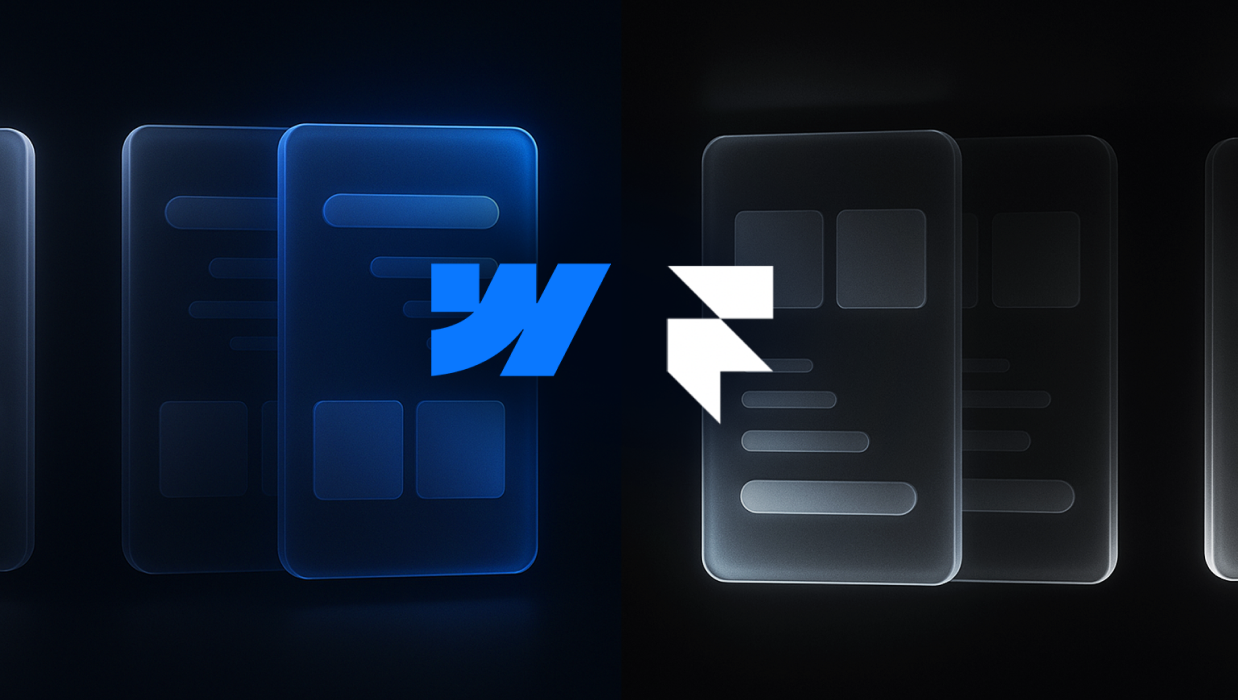
Framer vs. Webflow
So, you’ve hit the growth stage with your SaaS business (congrats!), and now you’re staring down the big decision: Framer or Webflow? Both platforms can help you build stunning websites without touching a single line of code, but they bring very different things to the table. Do you want sleek and fast or powerful and scalable? Tough call, right? Let’s break it down, so you can pick the one that’s going to take your SaaS game to the next level.
Why It’s Important to Choose a Scalable Building Platform
In the growth stage, your website is more than just a digital storefront—it’s the nerve center of your entire operation. As your business grows, so do your needs, and the last thing you want is to outgrow your website platform before you’ve even hit your stride. You need a platform that’s not only easy to use but scalable, customizable, and powerful enough to handle the complexities of a growing SaaS company. Trust me, you don’t want to rebuild your site every six months. Let’s make sure you’re choosing the right tool from the get-go.

Framer vs. Webflow: 5 Key Differences for SaaS Businesses
1. Ease of Use and Learning Curve
• Framer is like your favorite pair of slip-on shoes—super easy, no fuss. You’ll be creating interactive prototypes in no time, and it’s perfect if your team needs to whip up something quick without a ton of technical knowledge.
• Webflow, on the other hand, gives you all the control but comes with a bit more of a learning curve. Think of it as the high-end custom suit—gorgeous, but you need a bit of tailoring (or time) to get it just right. If you’ve got the patience to learn, the customization power is worth it (this is where we come in).

2. Design Flexibility and Customization
• With Framer, you get great design freedom for simple, interactive experiences. Perfect for showcasing something visually stunning without getting bogged down in code or complex structures.
• Webflow is your go-to if you’re ready to flex those customization muscles. You can go deep with interactions, custom animations, and really control every single pixel. Want full creative freedom with the power to integrate custom code when needed? Webflow’s your BFF.
3. SEO and CMS Capabilities
• Framer keeps it pretty basic on the SEO and CMS front. Sure, you can add meta descriptions and alt texts, but if you’re planning to scale up content-heavy strategies (think blogs, case studies, and more), it might feel limiting.
• Webflow is like your SEO and CMS dream team. You get built-in tools to optimize for search engines, and the CMS lets you create dynamic content at scale. If content marketing is part of your SaaS strategy, Webflow has the upper hand.
4. Integrations and Scalability
• Framer is a dream for quick prototypes and simpler websites, but as you scale, you might start feeling boxed in. Its integration capabilities aren’t as strong, so connecting with all your marketing and sales tools might require some extra elbow grease.
• Webflow plays well with others. It integrates with a variety of platforms, from CRMs to automation tools, making it perfect for a SaaS business that needs to scale quickly and smoothly. Plus, you can always add custom code for even more flexibility.
5. Pricing
• Framer is budget-friendly and ideal for smaller teams that need something fast and pretty. But as your business grows, you may need to lean on third-party tools to fill in the gaps, which can drive up costs.
• Webflow might be a bit more of an investment upfront, but it pays off in terms of control and features. You get what you pay for, and when scalability and flexibility are non-negotiable, Webflow offers great value for growing SaaS businesses.
Conclusion
At the end of the day, both Framer and Webflow are solid choices, but the right one depends on where your SaaS business is headed, that's the way up. So if you’re looking for a long-term partner that offers deep customization, powerful SEO, and the ability to scale with your business, Webflow is the platform that’s going to help you go the distance.
And here’s where we come in—if you decide to go the Webflow route, we can help you integrate the platform seamlessly with your existing tools. From setting up the perfect content management system to integrating your CRM for a smoother customer experience, we makes sure your Webflow site looks great, and works perfectly with your entire tech stack. So, if scalability, integrations, and long-term growth are part of your plan, Webflow + Noco is a combo you can’t ignore.
FAQs
More reads

A practical guide for B2B SaaS teams choosing between Framer and Webflow, with clear recommendations, real insights from our experts and the data you need to pick the right platform for your next stage of growth.
.png)
Picture this: A prospect asks ChatGPT about your B2B SaaS product. The AI pulls data from across the web and... finds nothing useful. Or worse, it shows outdated third-party content instead of your actual site. This happens more often than you'd think. But there’s a dead-simple fix.

The world of Webflow and web design comes with its own unique vocabulary, and understanding these terms is crucial for effective communication between designers, developers, and clients.